Learn how to cook cast-iron chicken breast, a basic 30-minute cooking method (marinating is optional). The chicken breasts are juicy, flavorful, and perfect for meal prep. Ready in no time, they pair well with anything from salads to mashed potatoes.
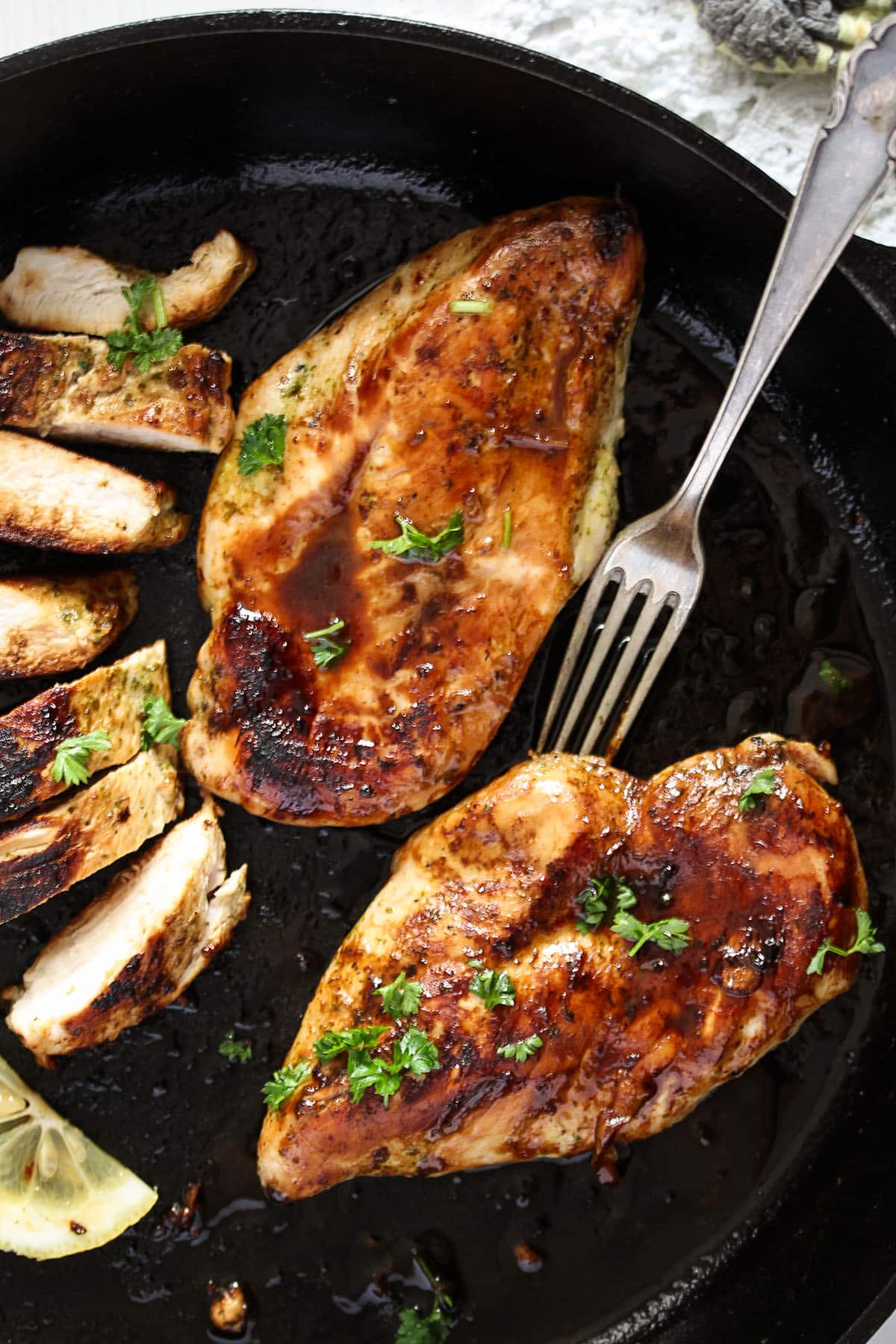
This cast-iron chicken breast recipe is easy and quick, low-fat, healthy, and incredibly delicious. It's a staple in our household and a go-to method for cooking chicken breast. Check out more stovetop chicken breast recipes: Pan-Fried Marinated Chicken or Dutch Oven Chicken Breast.
You can serve it as it is, use it for meal prep, or include it in countless other recipes.
Featured comment:
Zya: Great recipe. My chicken turned out wonderfully moist, tender and flavorful in the cast- iron. I only marinated for a little over an hour but I could certainly taste the difference. No more dry, burnt chicken breasts in this house anymore. Thanks again!
Jump to recipe
Why should you use a cast iron pan for cooking chicken?
Perfect chicken every time: A cast-iron pan or skillet is excellent for cooking chicken, giving it a juicy interior and nicely browned exterior. Use the skillet to make Easy Sauteed Chicken, too.
Lifetime investment: This pan is durable and cost-effective, lasting a lifetime with proper care.
Heat retention: No other pan retains the heat as well as a cast-iron skillet, making it perfect for many cooking methods like searing, stewing, or frying. And you could even use it for baking. Or make a Cast-Iron Skillet Shepherd's Pie.
Easy maintenance: Only wash it with hot water - NO detergents are allowed! Dry it thoroughly and lightly oil it before storing it. Ensure complete dryness by warming it on low heat on the stovetop or in the oven before oiling. Let it cool slightly so you don't burn your hands, but oil it while it is still warm.
Recipe ingredients
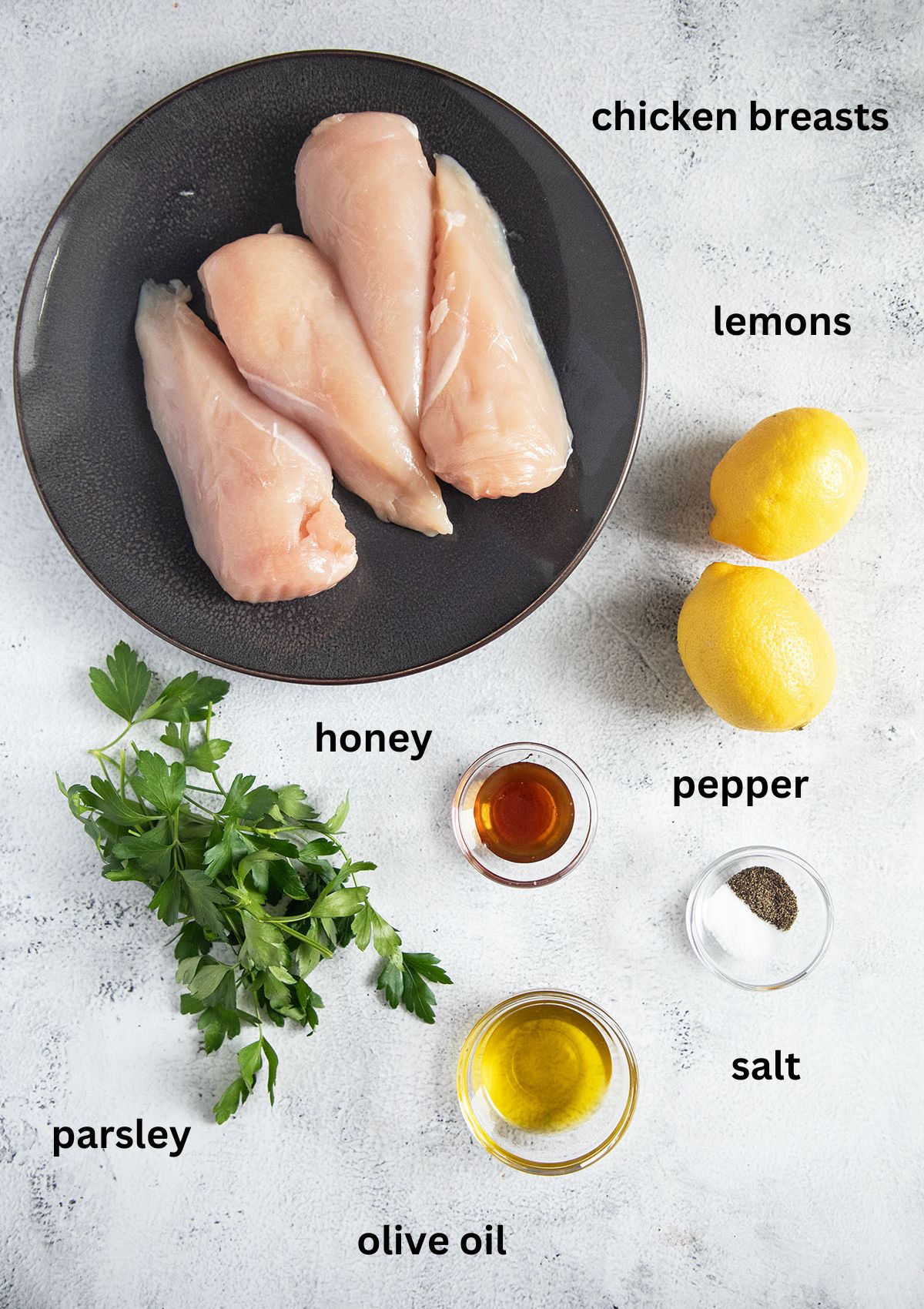
Boneless skinless chicken breasts: To ensure even cooking, use chicken breasts that are similar in size and thickness, weighing around 7 oz/ 200 g each.
Skin-on breasts are great, too; cook them on the skin side first.
Lemon: Preferably unwaxed, as you will also need some of its zest. Try the Sage Chicken, too.
Fresh parsley: Finely chopped fresh parsley or frozen parsley. I don't recommend using dried parsley.
Honey: One teaspoon of runny honey to balance the lemon's tanginess.
Olive oil: You will need one tablespoon for the marinade and one for cooking the cast-iron chicken breast. Alternatively, you can use canola oil, avocado oil, or vegetable oil.
Fine sea salt or kosher salt and ground black pepper.
See the recipe card for full information on ingredients and quantities.
How to cook chicken breast in a cast-iron skillet?
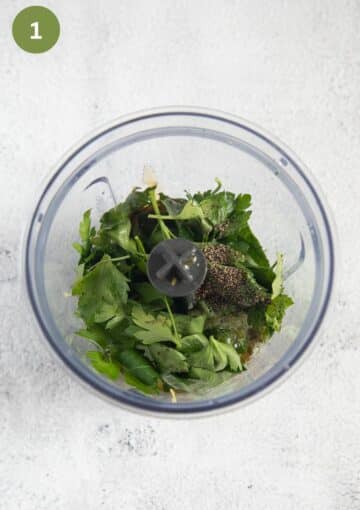
Step #1: Place all the marinade ingredients in a small food processor.
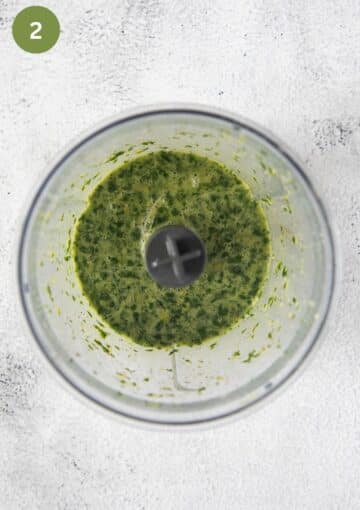
Step #2: Process them well. Alternatively, chop the parsley very finely and mix everything.
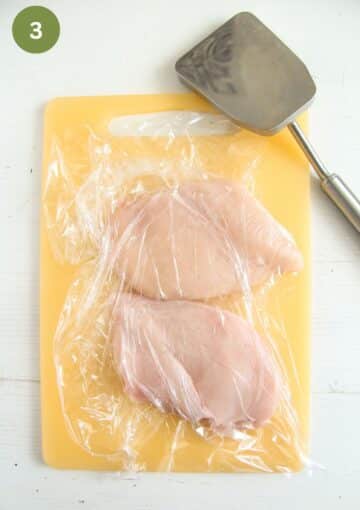
Step #3: Pound the breasts to an even thickness (See Tips).
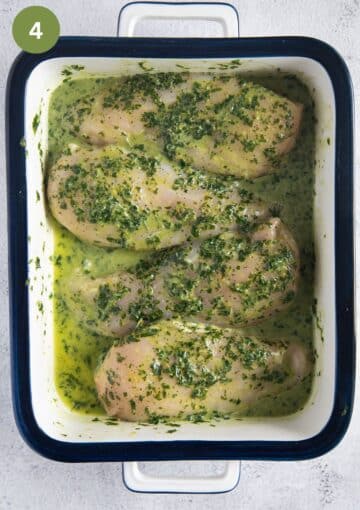
Step #4: Dry the meat with paper towels and marinate for 30 minutes to 3 hours. Marinating is optional but nice.

Step #5: Cook on medium-low, turning several times in between but not disturbing the chicken for the first 4-5 minutes.
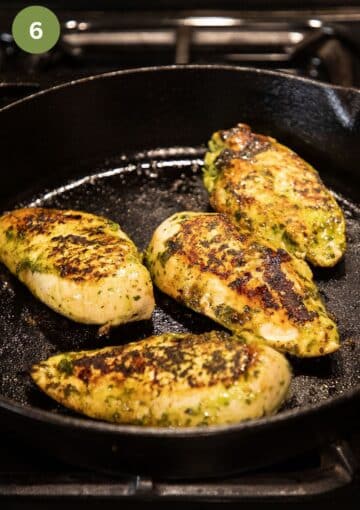
Step #6: After the initial 4-5 minutes, if the pieces get too dark too quickly, reduce the heat and shift the meat around in the skillet.
Cooking times for skillet chicken
Cook the cast-iron chicken breast on medium heat in the hot skillet for 13 to 15 minutes, turning occasionally until golden brown and cooked through. The exact cooking time depends on the thickness of the breast pieces.
After about 12 minutes, check for doneness by piercing into the thickest part of the breast; the juices should run clear.
For accuracy, use an instant-read thermometer (the Amazon link opens in a new tab); the internal temperature should reach 165°F/ 74°C.
How do you keep the meat from sticking to the skillet?
- Skillet seasoning: Ensure your cast-iron pan is well-seasoned before cooking. Also, use a light coating of oil in the skillet.
- Room temperature: Let the breasts reach room temperature to maintain pan heat.
- Preheat the skillet for 5-10 minutes on medium-high heat before adding oil and meat to the hot pan. Test the skillet's heat by holding your hand over it before adding the chicken.
- Cooking process: Reduce heat to medium after adding chicken to the skillet. Allow it to cook undisturbed for 4-5 minutes on the first side. If the breasts brown too quickly, reduce heat and adjust positions in the skillet to even cooking.
- Flipping: Avoid flipping the cast-iron chicken breast too soon to prevent sticking. If you find the pieces browning too quickly, reduce the heat and rotate them in the skillet. This ensures even cooking and prevents some areas from becoming too hot due to variations in stove burner intensity.
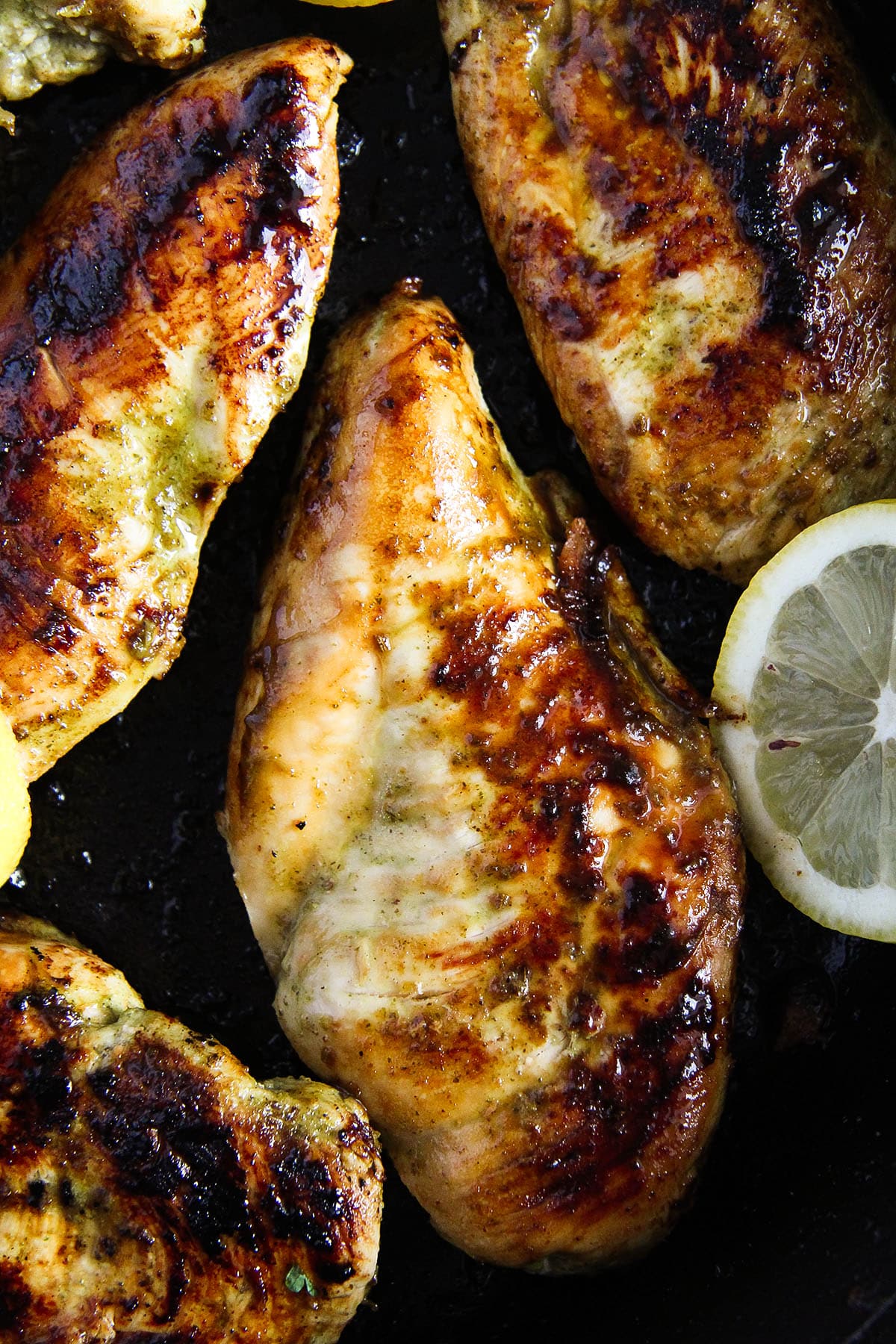
Good to know!
Pounding the meat is optional, but it aids in quicker and more even cooking of the breast. Unpounded pieces require 20-25 minutes (always ensure they are cooked through), with frequent flipping to prevent excessive charring.
Marinating the meat is optional but recommendable; 30 minutes would be great! If marinating for just half an hour, cover the dish with plastic wrap and leave it on the counter at room temperature.
Room temperature: If you marinate it for longer (for up to 3 hours), remove it from the fridge half an hour before cooking to bring it to room temperature. Searing chicken breasts straight from the refrigerator can result in drier outer layers and uneven cooking.
Servings: This cast-iron chicken breast recipe can easily be scaled for more servings. Use a large cast-iron skillet or cook the meat in several batches without overcrowding the pan.
Recipe FAQs
We use a 12-inch/ 30 cm cast-iron skillet, large enough to hold 4 to 6 breasts. When we only need 2 or 3 breasts, we use the smaller 10-inch/ 25 cm skillet.
You can use another heavy-bottomed pan or a nonstick pan.
Refrigerate leftovers in an airtight container for 3-4 days. Use leftovers to make Sour Cream Enchiladas, Romanian Boeuf Salad, Chicken Shawarma Plate, sandwiches, or salads.
Freeze the cooled cast-iron chicken breast in Ziplock bags or airtight containers for up to 3 months. Defrost in the fridge.
Reheat shortly in the microwave (20-second intervals and checking). Reheat in a skillet over medium heat or the oven at 350°F/ 175°C for 10-15 minutes or until warmed through.
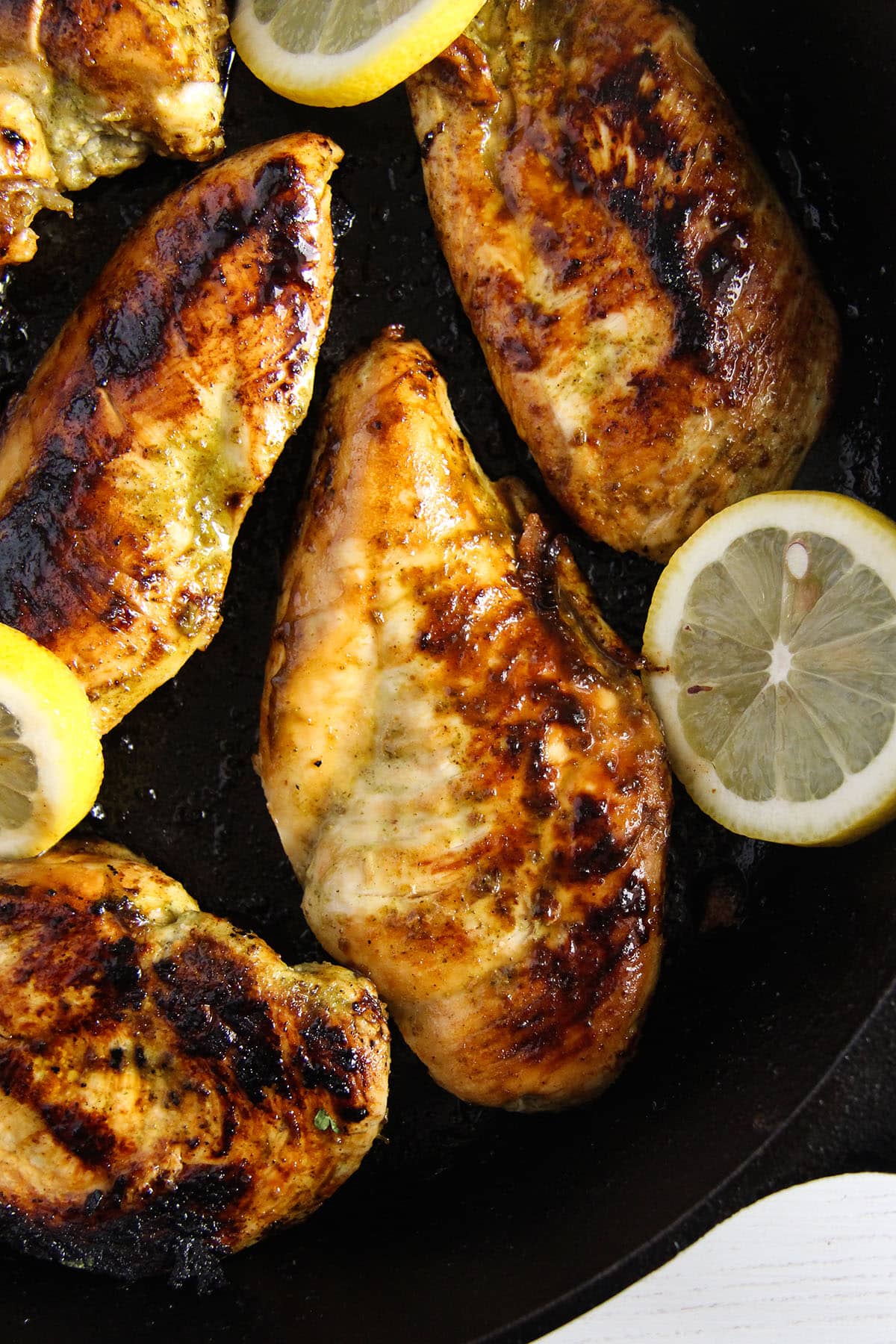
How to serve?
The sky is the limit!
Do you like this recipe?
Please leave a good rating in the recipe card below. Stay in touch through social media: Pinterest, Facebook, and Instagram. Don't forget to tag #whereismyspoon when you try a recipe!Recipe
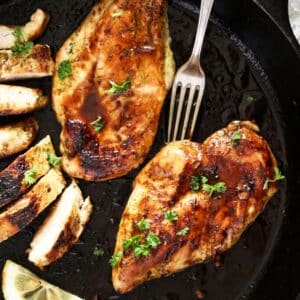
Cast-Iron Chicken Breast
Equipment
- Small food processor optional
Ingredients
- 4 boneless skinless chicken breasts about 7 oz/ 200 g each Notes 1, 2
- 1-2 lemons Note 3
- small handful of parsley 10 g/ 0.3 oz picked leaves, Notes 4,5
- 2-3 teaspoons honey
- 3 tablespoons olive oil divided
- 1 teaspoon fine sea salt
- ½ teaspoon ground black pepper
Instructions
- Lemon: Wash and zest the lemon. Juice it. I start with 3 tablespoons of lemon juice and add more to the marinade as required.1-2 lemons
- Make the marinade: Mix lemon zest and juice, parsley leaves, honey, 2 tablespoons of olive oil, salt, and pepper in a small blender. Process well. Adjust the taste with more lemon juice or honey according to your liking. Alternatively, finely chop the parsley and mix it with the remaining marinade ingredients.lemon zest and juice + small handful of parsley + 2-3 teaspoons honey to taste + 2 tablespoons olive oil + 1 teaspoon fine sea salt + ½ teaspoon ground black pepper
- Pound chicken: Place the breasts on a board between two pieces of plastic wrap. Pound them to an even thickness for even and quick cooking.4 boneless skinless chicken breasts
- Marinate chicken: Place the chicken breasts and marinade in a shallow dish in a single layer. Let the chicken marinate on the counter for 30 minutes or in the refrigerator for about 3 hours. Remove from the fridge 30 minutes before cooking.Alternatively, use a Ziplock bag to hold the chicken and the marinade. Seal the bag and squeeze out the excess air.
- Cook chicken breasts: Heat a cast-iron skillet very well (for 5 to 10 minutes). Heat the remaining oil, add the chicken, turn the heat to medium-low, and cook 13-15 minutes, turning several times in between but not disturbing the chicken for the first 4-5 minutes or so.1 tablespoon olive oil
- Temperature: After the initial 4-5 minutes, if the chicken breast gets too dark too soon, lower the heat and move the chicken around in the skillet.
- Check doneness with an instant-read thermometer; the safe internal temperature is 165°F/74°C. Or check by inserting a skewer in the thickest part of the breast; the juices should run clear. Avoid overcooking, particularly if the chicken pieces are thinner.
- Rest the chicken breasts for about 5 minutes before serving.
Notes
- Chicken breasts: Use pieces similar in size and thickness to ensure even cooking, ideally weighing around 7 oz/ 200 g each. A bit more or less is OK, but adjust the cooking time accordingly.
- Other cuts: Skin-on breasts are great, too; cook them on the skin side first. Alternatively, use boneless, skinless thighs; the cooking time will not change too much. Add a couple of minutes and check that the meat is cooked through.
- Lemon: Preferably an unwaxed lemon, as you will need both zest and juice.
- Parsley: Frozen parsley is also ok. You can replace it with other fresh or dried herbs like oregano, thyme, or rosemary.
- Alternative seasonings: Italian seasoning, Cajun seasoning, curry powder, Garam Masala, all-purpose seasoning, or any chicken rub or spice mixture you like. You can also add 1-2 grated garlic cloves or ½ teaspoon garlic powder to the marinade.


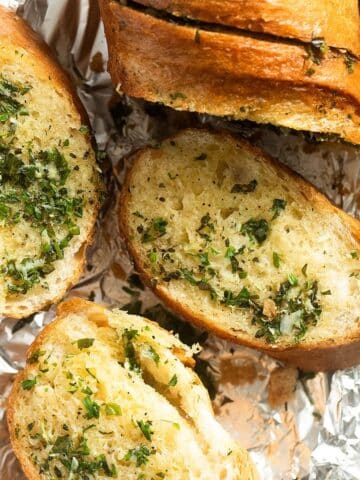
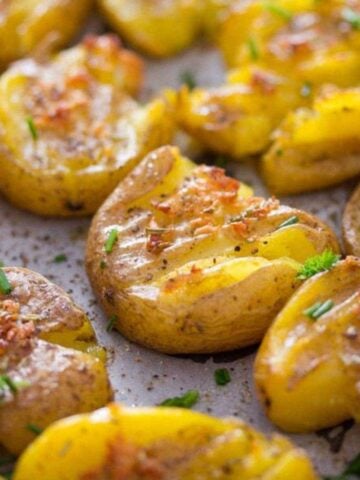
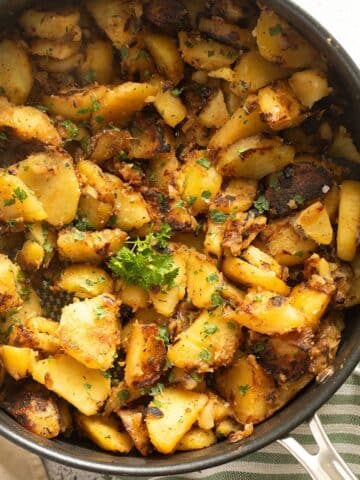

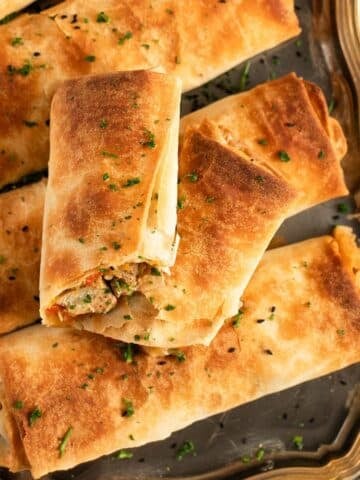
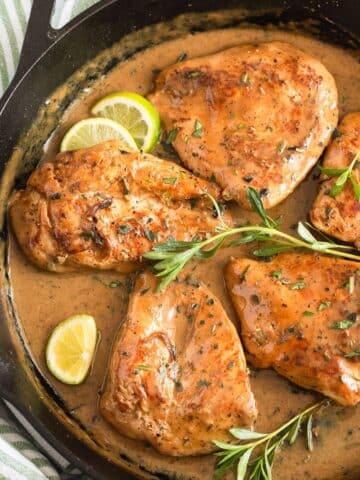
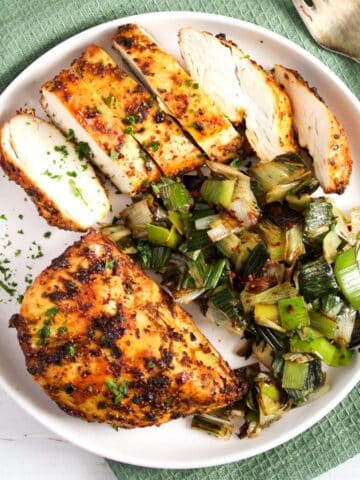
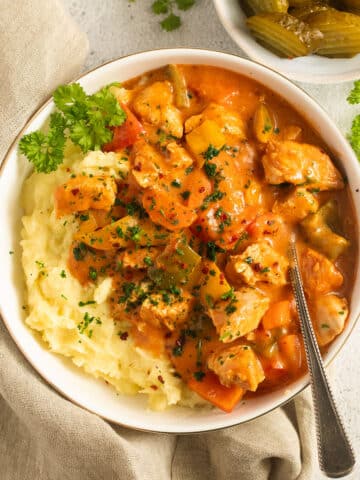

Douglas says
Depending on the marinade, I might simmer it in a separate pot for 5-10 minutes and then add some cornstarch or flour to make a gravy.
Megan says
I didn’t have time to let marinade for long, but was still a wonderful recipe and great results. The chicken was flavorful and juicy and my teen son also loved it (and he’s picky). Made with mashed potatoes with gravy and peas. I’ve added to my dinner rotation!
Adina says
So happy to hear it, Megan. Thank you for the feedback.
Chris K. says
Although I’m an experienced cook, these looked great, but turned out really tough. I did the marinade for 10 hours, used organic breasts, and monitored with a meat thermometer…but they were extremely chewy. Thank you for your great directions and enthusiasm for cooking, but these were a fail for me.
Adina says
Sorry to hear that, they always turn out well for me.
Raluca says
I am not a chicken fan but my husband loves chicken. I had some good quality chicken breast and stumbled upon your recipe. Excellent! Whole family loved it - so easy and yet delicious. Even my 7 months old daughter gobbled the chicken breast! Super delicios! Am să salvez blogul si să mă apuc de gătit. Am văzut rețeta de dashi - de-abia aștept să o fac! Salutări din Frankfurt de la o altă colecționară de cărți de bucate!
Adina says
Multumesc Raluca, ma bucur ca a fost bun puiul. Frankfurt nu e asa departe, doar vreo 2 ore, suntem aproape vecine. 🙂 Cu cartile e o obsesie, am sute... de as trai atata incat sa fac fiecare reteta, as trai ewig! 🙂
Larry says
Discard the marinade after you put the chicken on to cook? Also would you suggest injecting the marinade into the chicken breast to get more flavor?
Adina says
Hi Larry. Yes, discard the marinade. I can't say about injecting, I've never tried it. The chicken is not dry.
Zya says
Great recipe. My chicken turned out wonderfully moist, tender and flavorful in the cast- iron. I only marinated for a little over an hour but I could certainly taste the difference. No more dry, burnt chicken breasts in this house anymore. Thanks again!
Adina says
You are welcome, Zya, so happy you liked it. 🙂
Adina says
Hi Zac. It is not of vital importance, you should adjust the heat as necessary. I usually go for medium, and turn it down if I think the chicken browns too much too quickly. It also depends on the size of the pan, on the kind of heat you are using. I have a gas burner, so I often lower the heat if I think things might go too fast. Also, what is medium or medium-low on a gas burner especially is always open to interpretation.